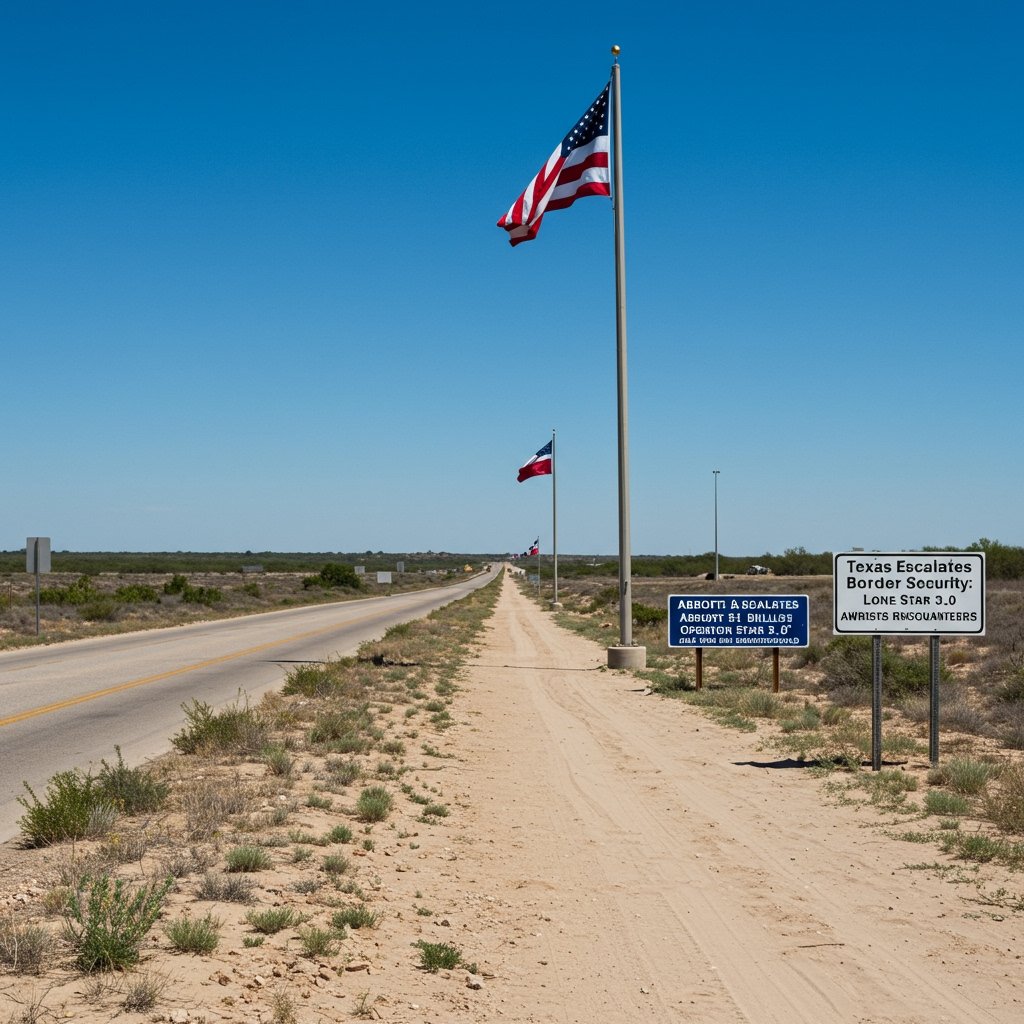Texas Governor Announces Major Border Security Expansion Under Operation Lone Star 3.0
Eagle Pass, Texas – In a significant move to bolster the state’s efforts along the U.S.-Mexico border, Texas Governor Greg Abbott on May 17, 2025, announced the launch of Operation Lone Star 3.0. The expanded initiative, unveiled during a press conference held in Eagle Pass, located in Maverick County, represents a substantial escalation of the state’s ongoing border security operations.
Governor Abbott detailed the key components of this new phase, emphasizing a heightened commitment of resources and personnel to address what state officials describe as persistently high levels of activity and a recent uptick in migrant encounters. The announcement underscores the state’s resolve to implement its own measures to deter illegal crossings and disrupt criminal activity along the border, separate from federal actions.
Financial Commitment and Scope
A cornerstone of Operation Lone Star 3.0 is a major new investment of $1 billion in state funds. This substantial allocation significantly increases the financial commitment to border security. Since its inception, the cumulative cost of Operation Lone Star, encompassing its various phases and expansions, is now projected to exceed $6 billion. This makes the initiative one of the most expensive state-led border security endeavors in recent U.S. history.
The additional $1 billion is earmarked for a variety of purposes aimed at enhancing both physical barriers and operational capacity. State officials indicated the funds would support the deployment of more personnel, the construction of new infrastructure, and the acquisition of necessary equipment and technology to sustain the intensified operations across a vast and challenging geographical area.
Increased Personnel and Strategic Locations
Operation Lone Star 3.0 includes a direct increase in the number of military personnel assigned to the mission. Governor Abbott announced the deployment of 500 additional National Guard troops. These troops will be strategically positioned in what state officials described as “critical sectors” along the Rio Grande. The river serves as the international boundary for hundreds of miles, presenting diverse topographical challenges, from deep, fast-flowing sections to shallow, easily waded areas, making specific sector reinforcement crucial.
In conjunction with increased troop numbers, the initiative also calls for the establishment of three new Forward Operating Bases (FOBs). The locations for these new bases are near Laredo, Carrizo Springs, and Del Rio. The selection of these sites reflects a focus on key points along the border that have experienced significant crossing attempts and operational challenges. FOBs typically serve as operational hubs, providing logistical support, housing, and command centers for troops and law enforcement operating in remote or critical areas, allowing for quicker response times and sustained presence.
Rationale and Data Cited by State Officials
The impetus for launching Operation Lone Star 3.0 was directly linked by state officials to recent data on border encounters. According to figures cited during the press conference, the state observed a 15% increase in migrant encounters in the preceding month when compared to the same period in the previous year. This statistic was presented as clear evidence of ongoing and increasing pressure along the border, necessitating an escalated response from the state government.
The decision to commit substantial additional resources and personnel, as outlined in Operation Lone Star 3.0, was framed by state leadership as a necessary measure to address this documented rise in activity and its associated impacts on Texas communities and state resources. The data point served as a key justification for the scale and urgency of the announced expansion.
Physical Barriers and Deterrents
Beyond personnel and operational bases, the expanded initiative also includes significant physical barrier enhancements. Operation Lone Star 3.0 plans to double the miles of concertina wire deployed along the border. Concertina wire, a type of barbed wire or razor wire formed in large coils, is used to create formidable physical obstacles intended to slow down or prevent illegal crossings at specific points.
Furthermore, the plan involves adding more marine barriers in strategic river locations. These barriers, often consisting of buoys or other flotation devices linked together, are placed within the Rio Grande itself to deter crossings by making the waterway more difficult and dangerous to navigate illegally. The strategic placement of both concertina wire and marine barriers is designed to channel migrant flows and create deterrents at vulnerable points along the extensive river boundary.
Context of Operation Lone Star
Operation Lone Star was initially launched in March 2021 with the stated objectives of deterring illegal immigrant crossings and combating the smuggling of drugs and people into Texas. It involves the deployment of the Texas National Guard and Department of Public Safety (DPS) troopers. The initiative has utilized a variety of tactics, including increased patrols, the construction of physical barriers like concertina wire and sections of border wall, and the controversial practice of busing migrants to cities outside of Texas.
The unveiling of Operation Lone Star 3.0 represents a significant scaling up of these ongoing efforts, building upon the foundation laid by previous phases. The cumulative cost exceeding $6 billion underscores the massive financial undertaking the state has committed to this independent border security strategy over several years.
Conclusion
The announcement of Operation Lone Star 3.0 on May 17, 2025, signals a new phase in Texas’ state-led border security operations. With an additional $1 billion in funding, bringing the total cost to over $6 billion since 2021, the initiative will see the deployment of 500 more National Guard troops, the establishment of three new Forward Operating Bases near Laredo, Carrizo Springs, and Del Rio, a doubling of concertina wire mileage, and the addition of more marine barriers. State officials justified the expansion by citing a 15% increase in migrant encounters in the preceding month compared to the same period last year, reinforcing the state’s position that escalated measures are necessary to manage the situation at the border.






